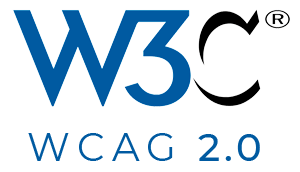The ADA (Americans With Disabilities Act) requires by law that all websites which do business in the United States meet certain accessibility requirements. This means that your website must be easily usable by individuals with disabilities. But how do you know if your website meets accessibility standards?
There are easy ways to test whether your website meets ADA requirements, and many things you can do at low-cost to ensure that you’re meeting your customers’ needs. Primarily, your content needs to be user-friendly and easy to understand, and your website’s UI (User Interface) needs to be compatible with common assistive technologies. This means that it should be easy to navigate using tools such as screen readers, or by keyboard-only navigation.
There are many methods by which you can gauge your website’s accessibility level, and we’ll enumerate a few of those here.
What are some automated tools I can use?
There are a large number of automated services dedicated to ADA compliance. These scan your website’s source code and content, and return suggestions on how you can bring your website up to accessibility standards.
Fully automated subscription services. These services typically include a line of code or a short script which you include in your website’s code. The script ensures in real-time or by periodic scan that your website is always up to full compliance. This can include automatically adjusting your UI for the vision-impaired or allowing users to customize their own views, optimizing your content for screen readers and keyboard navigation, and more. These are typically priced on a subscription basis. The benefit is that it’s almost completely hands-off – you simply install the code, and they’ll take care of the rest. Examples of fully automated compliance services include AccessiBe, AudioEye, and WebFX. Some of these are able to provide automatic compatibility with ADA/508/WCAG standards (note that these solutions require JavaScript so they don’t provide true compliance and do not provide the benefits of better search engine results), and others provide builder tools to help enable you to fix your compliancy problems yourself.
- One-time instant scanners. These online services provide a one-time scan of your website, and report your results instantly. Examples of this type of service are Web Accessibility by Level Access, and WAVE. In seconds, you are provided with a downloadable report of some things you can do to easily improve your ADA compliance standards. These may include tips such as, “provide alternative text for images”, “ensure link text is meaningful within context”, “provide a valid label for form fields”, and more. This will give you a good jumping-off point for making improvements to your accessibility. These tools are generally free of charge because they’re only reporting your issues, not fixing them. It’s also a good idea to run your website through several of these scanning services and not just one – they all report things differently, and your final task list will be much more comprehensive.
- Scanning plugins or modules. If your website is built on a common CMS (Content Management System), there are often plugins you can install which scan your entire website for ADA compliance. These create detailed reports which your developer can then use to bring your website up to standards. Two such examples are Online ADA (a plugin for WordPress), and ADA Compliance, a module for Drupal. WordPress in particular has many tools for this.
- Browser extensions. If you’re a Google Chrome user, the SiteImprove Accessibility Checker extension can be very useful. Simply install the extension, then visit your website. The extension provides real-time visual feedback by highlighting detected issues right on the page, including recommendations on how to fix them. A11yTools makes a similar extension for Safari.
Automated services, whether one-time or ongoing, have the drawback of lacking human interaction and input. This can mean that certain concerns are missed by the learning algorithms employed by these scanners. It’s always best to combine an automatic process with a manual process, to have a maximally effective overview of your website’s compliance. This can often mean hiring a web design firm specializing in ADA compliance standards (like Thrive Web Designs) to interpret your automated reports, determine what was overlooked, fix your issues, and provision for ongoing compliance.
How do I test a website for 508 compliance?
The term “508 compliance” is shorthand referring to requiring federal government websites to be safe and accessible for people with disabilities. Section 508 is an amendment to the United States Workforce Rehabilitation Act of 1973 mandating that all electronic and information technology developed, procured, maintained, or used by the federal government must be accessible to people with disabilities.
You may be thinking “Well, so what? I’m not a government website! Why would I need to worry about 508 compliance?”
It’s true that 508 compliance and ADA compliance – which you DO need to adhere to, by law – are very similar. Ultimately, the difference is that the ADA protects the civil rights of persons with disabilities participating in interstate commerce, and Section 508 is a set of regulations related to access to ICT (Information and Communications Technology.) This means that telephone networks, computer networks, satellite systems, et al., and the devices which utilize information networks – televisions, radios, cell phones, computers, telephones, modems, etc. – must be user-friendly and accessible to people with disabilities. This means that your website or application needs to play nice with any platform it’s accessible on.
In short, the ADA standards are broader, but both ADA and 508 are dedicated to making media accessible for everyone. Failure to do so may result in lawsuits and the expense of redesigning your website for accessibility, as well as the invisible expenses of public relations issues arising from your perceived discriminatory practices, and your neglect of a viable market sector.
What can I do to adhere to 508 compliance?
- Closed captioning and transcripts. If you have audio or video files, you must provide closed captioning, a text transcript of the video, or other accommodations. Since manually creating captions is time-consuming and auto-captioning (such as with YouTube) is prone to errors, there are many companies nationwide dedicated to providing closed captioning transcripts for your videos or podcasts.
- Screen reader compatibility. Many visually impaired internet users, as well as those with cognitive or learning disabilities, use screen readers to read aloud to them the text found on web pages. Because screen readers process text differently than a human would by sight, it’s important that your content is easily navigable by these devices.
- Keyboard accessibility. Users with limited mobility can be dependent on keyboard-only visual indicators, which need to be programmatically indicated by your website in order to work. This includes the ability to focus on certain elements, such as text or form fields or buttons, and the ability to quickly tab between clickable/actionable elements on your website, including menus.
The above tips also help with ADA compliance as well! But there’s another type of disability compliance you may have seen, called WCAG (Web Content Accessibility Guidelines.)
What can I do to adhere to WCAG compliance?

The four principles of WCAG compliance are that your web content is perceivable –users must be able to perceive the information being presented whether through sight, hearing, or touch; operational – do all of the navigable components of your website work? Are there any elements which require interaction that all users cannot perform?; understandable – the information presented and the method of operating your website must be easily understood; and robust – the content must be able to be reliably interpreted and used by most common assistive technologies.
This means that WCAG compliance ties heavily into ADA and 508 compliance. The WCAG guidelines are intended to help you meet the legal standards for each of the other two, when you’re designing your website. W3 maintains a comprehensive list of tools which you can use to determine whether your website meets accessibility standards for all.

 Fully automated subscription services.
Fully automated subscription services. 

